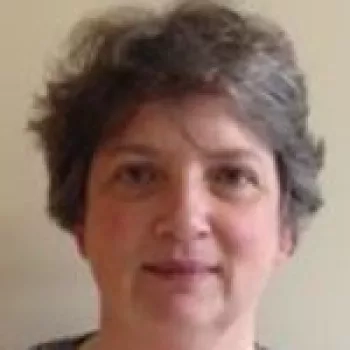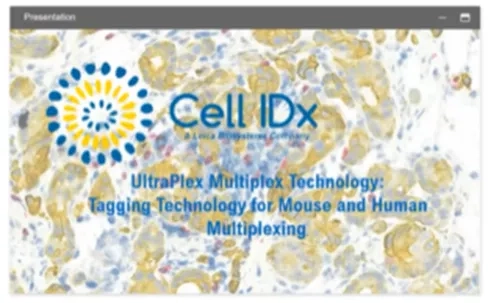Multiplex Immunofluorescence Profiling of Tumor Biopsies Using UltraPlex mxIF Technology


An unmet need in tissue diagnostics is the ability to simultaneously detect three or more markers on a single tissue specimen, i.e. multiplexing. Unlike other immunoassays, i.e. flow cytometry, ELISA and bead assays, which solely quantify the biomarker in a sample, a multiplex immunoassay quantifies the biomarker, identifies the location of the cell in the tissue and identifies the spatial relationship of the biomarkers with respect to each other. Being able to identify the contextual relationships of immune cell phenotypes and other biomarkers in a tumor is believed to be critical to understanding the state of the immune system before and after immunotherapy. Multiplex immunostaining can also be described as image cytometry or flow cytometry in situ. Detecting multiple biomarkers on a single slide presents many challenges: correct selection of biomarkers, sourcing and qualifying antibodies against the biomarkers, detection methods, optimization of the staining-detection protocol and how to visualize, record and interpret the resulting complex staining pattern, all without generating artefact from cross-talk at each step. Today we shall demonstrate a complete solution for standardization of immunofluorescent staining and detection, digitization and analysis for tumor biopsy material. We have demonstrated that this protocol can be carried out on the Leica Biosystems BOND RX auto-stainer and the stained tissue can be imaged on the Aperio system that allows the user to easily digitize the whole slide at high-resolution, manage the resulting huge image files and provide accurate quantitative interpretation in the form of mark-up images and numerical data at the per cell level providing detailed phenotype information.
Learning Objectives
- What is Multiplex, and what is the role of multiplex in Digital Pathology?
- What tools are available today for multiplex?
About the presenters

Dr Snyder received her PhD in immunology from the University of Cambridge, UK and trained as a postdoctoral fellow at Scripps Research Institute, La Jolla, California. Dr. Snyder has over 30 years' experience in immunology research, reagent development, preclinical development of biotherapeutics, and business development of immunoassay and immunodiagnostic products. She has held positions as Associate Professor at the University of California, San Diego, as well as Director of Immunology at Dynavax Technologies and key business development roles at both Solulink Biosciences and Cell IDx. Dr Snyder has over 40 papers and reviews in the areas of immune regulation and vaccine development.

Formerly, Product Support Specialist for CytoVision, Ariol & Aperio VERSA 2010-2016, Marie-Louise has a 13 years of experience in bio-medical research, being trained as a Molecular Biologist, extending into Cell Biology, Cytogenetics, Developmental Biology and Biochemistry during the course of research career. Marie-Louise received her PhD in Biological Sciences from University of Leicester for deletion-mapping in human breast cancer. She has also received two diverse post-doctoral research fellowships at the University of Edinburgh, creating human artificial chromosomes, and investigating Drosophila cell cycle mutants.
Related Content
El contenido de Leica Biosystems Knowledge Pathway está sujeto a las condiciones de uso del sitio web de Leica Biosystems, disponibles en: Aviso legal.. El contenido, incluidos los webinars o seminarios web, los recursos de formación y los materiales relacionados, está destinado a proporcionar información general sobre temas concretos de interés para los profesionales de la salud y no está destinado a ser, ni debe interpretarse como asesoramiento médico, normativo o jurídico. Los puntos de vista y opiniones expresados en cualquier contenido de terceros reflejan los puntos de vista y opiniones personales de los ponentes/autores y no representan ni reflejan necesariamente los puntos de vista ni opiniones de Leica Biosystems, sus empleados o sus agentes. Cualquier enlace incluido en el contenido que proporcione acceso a recursos o contenido de terceros se proporciona únicamente por comodidad.
Para el uso de cualquier producto, debe consultarse la documentación correspondiente del producto, incluidas las guías de información, los prospectos y los manuales de funcionamiento.
Copyright © 2024 Leica Biosystems division of Leica Microsystems, Inc. and its Leica Biosystems affiliates. All rights reserved. LEICA and the Leica Logo are registered trademarks of Leica Microsystems IR GmbH.



